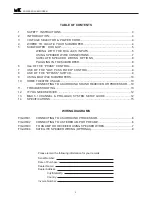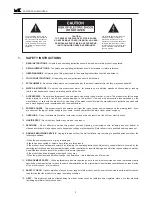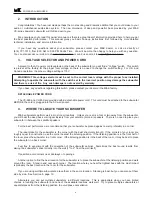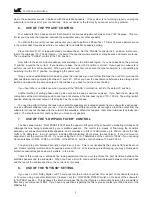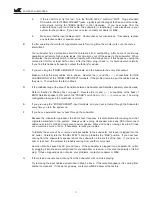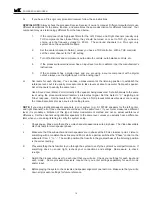
9. USING MULTIPLE SUBWOOFERS
Using two (or more) subwoofers in your system gives you the ultimate in bass performance. You'll hear improved
impact and definition, as well as greater output and dynamic range.
If multiple subwoofers are used, place them in the same location. Stacking is best, but you can also put them side
by side. Alternately, you can put multiple subwoofers in different locations. This is appropriate when you have limited
choices in locating the subwoofer and none of the available locations work well. Try to place multiple subwoofers at
equal distances from the listening position to avoid phase cancellation.
With two subwoofers, simply run one speaker wire or interconnect to each subwoofer. Because the left and right
channel input signals are combined in the subwoofer's input stage, the only thing this changes is amplifier gain. To com-
pensate, just set the "BASS LEVEL" control slightly higher.
10. HOME THEATRE USAGE
If you are using your subwoofer in a multichannel Home Theatre system, make sure you are using the subwoofer
Output jack to connect your subwoofer. Check "Use of the Bypass Setting" above, as well as M&K's System Setup
Guide on page 12.
Compared to music sources, in some cases, you may prefer the subwoofer set to a higher playback level for video
sources. This may occur when video sources (especially older films and some television) have very little deep bass
present. You may also want to exaggerate the effect to make spectacular video sources even more impressive!
CONNECTING THE SUBWOOFER TO A SURROUND SOUND RECEIVER OR PROCESSOR:
The preferred connection from a surround sound amp or controller is from a SUBWOOFER OUTPUT (or MONO)
RCA jack. This connection insures that a full bass signal is fed to the subwoofer. If your component doesn't have a sub-
woofer output jack, connect the subwoofer to the front Left and Right channel speaker outputs (do not use the Center
channel speaker output).
VERY IMPORTANT: When the subwoofer is connected to the Left and Right amplifier outputs using speaker wires,
the Center channel WIDE/NORMAL switch MUST be set to the NORMAL mode. If the switch is set to the WIDE mode,
the bass content of the Center channel will not be fed to the subwoofer, and a significant amount of the bass in the mate-
rial you are listening to will be lost.
11. TROUBLESHOOTING
Your M&K subwoofer amplifier circuit provides high reliability, and, if necessary, easy modular replacement of parts.
This guide will help you to solve or diagnose most problems that can occur with your subwoofer. In the event that a fuse
blows, you must replace it with a fuse of the correct value to avoid a fire hazard and to maintain your warranty
protection.
A.
If your subwoofer has no output:
1.
Make sure that the subwoofer is plugged into an AC outlet and that the cord is securely
plugged into the back of the subwoofer.
2.
Make sure that the “POWER” switch is set to the “AUTO” or “ON” position. If you hear no
output with the switch set to “AUTO”, move the switch to the “ON” position.
3.
Check the "BASS LEVEL" control and make sure that it is set above the "MIN" position. Rotate
it clockwise if it is set to the "MIN" position.
4.
Check the red LED on the subwoofer's back panel. If the LED is not lit, check the AC fuse
next to the LED. Unplug the subwoofer before changing the fuse. See instructions on Page
12. If the element inside the fuse is broken, replace the fuse. If it blows again, contact your
dealer or M&K.
POWERED SUBWOOFER
10


